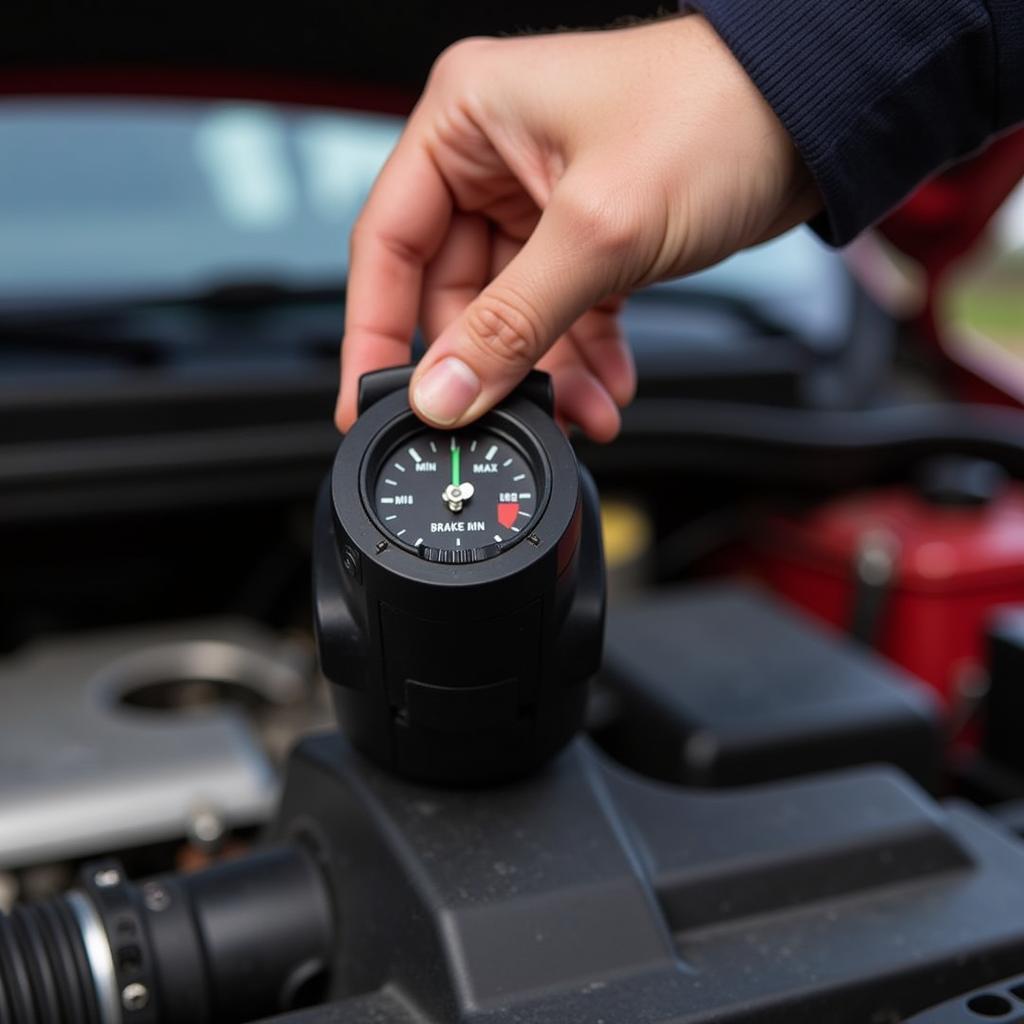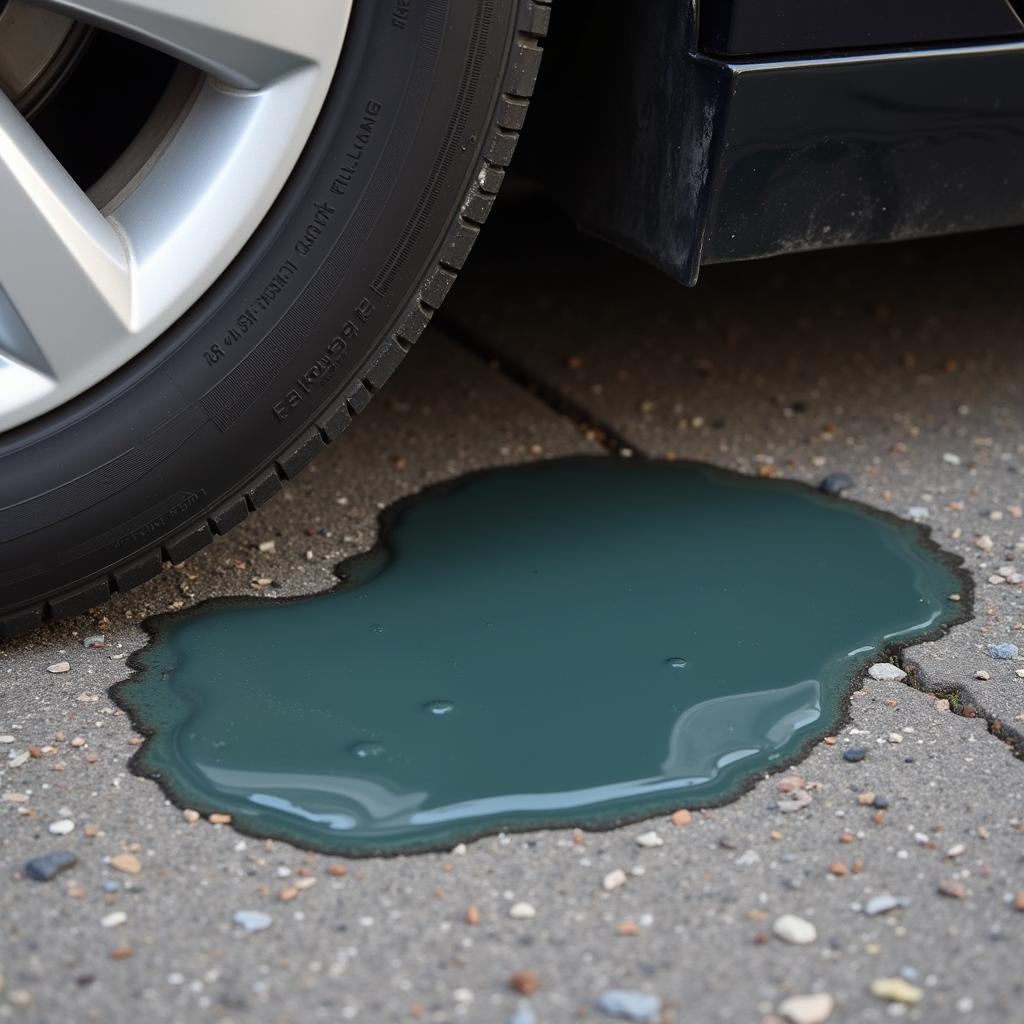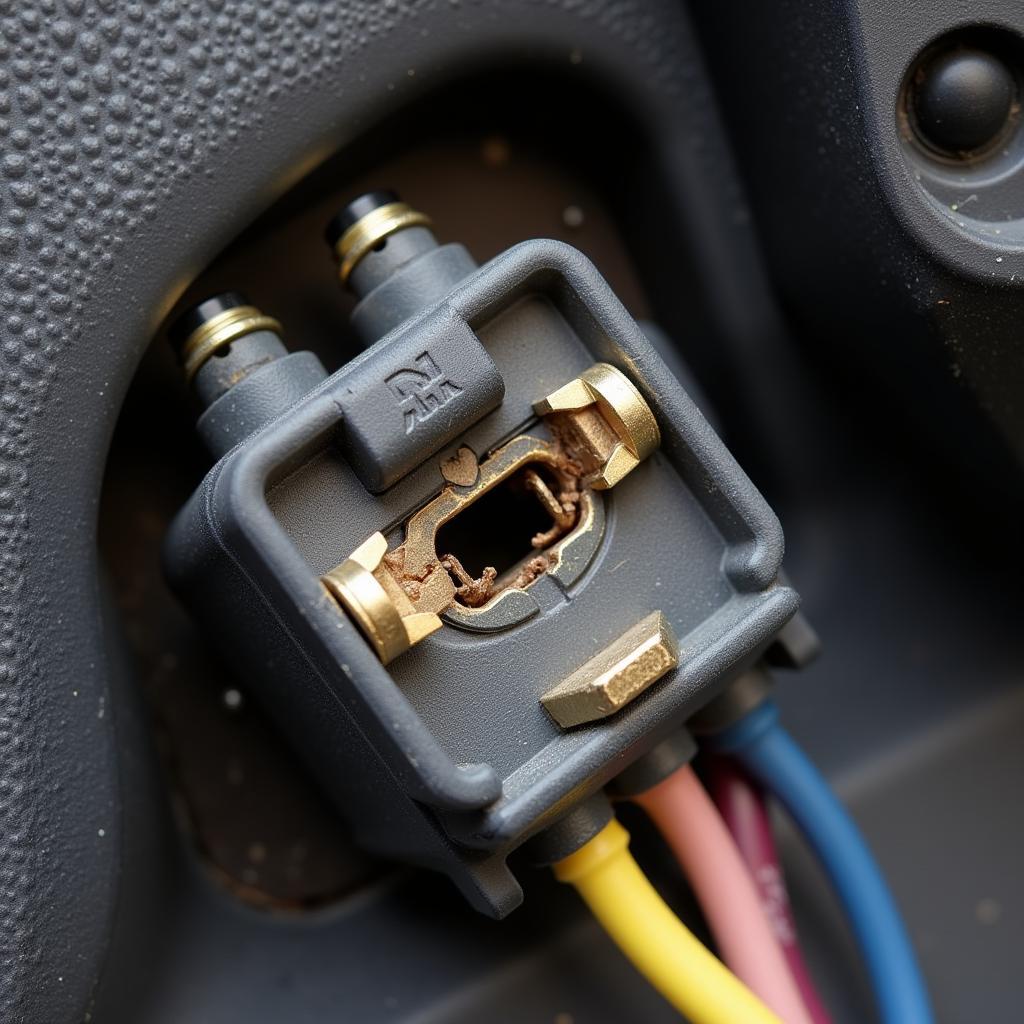A glowing brake warning light on your dashboard is a clear sign that something isn’t quite right with your car’s braking system. While it can be a minor issue, it’s crucial not to ignore it. This article dives deep into the common reasons behind a persistent brake warning light and provides insights on how to diagnose and address the problem.
Understanding Your Car’s Brake Warning System
Your car’s brake warning light is designed to alert you to potential issues within the braking system. It can be triggered by several factors, some more serious than others. Let’s explore these potential culprits:
Common Causes of a Brake Warning Light
1. Low Brake Fluid Level
One of the most frequent reasons your brake warning light illuminates is low brake fluid. Brake fluid is the lifeblood of your car’s braking system, responsible for transmitting the force you apply to the brake pedal to the wheels, ultimately stopping your vehicle.
How to check:
- Locate the brake fluid reservoir under the hood (refer to your owner’s manual for its exact location).
- Check the fluid level against the “Min” and “Max” markings on the reservoir.
If the fluid level is low, it’s essential to add the correct type of brake fluid recommended for your car model. However, simply adding fluid won’t solve the problem if there’s a leak, which needs immediate attention.
 Checking Brake Fluid Level
Checking Brake Fluid Level
2. Worn Brake Pads
Brake pads are designed to wear down over time. When they become too thin, a sensor within the brake pad assembly triggers the warning light. This indicates it’s time for a brake pad replacement.
Expert Insight:
“Driving with worn brake pads not only compromises your safety but can also damage your brake rotors, leading to more costly repairs,” says John Smith, Senior Automotive Technician at ABC Auto Repair.
3. Brake System Leaks
A leak in your brake lines, calipers, or wheel cylinders can lead to a drop in brake fluid pressure, triggering the warning light.
How to identify:
- Look for signs of brake fluid leaks under your car.
- Inspect the brake lines and hoses for any cracks or damage.
 Identifying a Brake Fluid Leak
Identifying a Brake Fluid Leak
What to do:
A brake fluid leak requires immediate attention from a qualified mechanic.
4. Malfunctioning ABS System
Modern cars come equipped with an Anti-lock Braking System (ABS), designed to prevent wheel lockup during hard braking. A malfunctioning ABS module or sensor can trigger the brake warning light.
Expert Insight:
“If the ABS warning light illuminates alongside the brake warning light, it’s highly indicative of an issue with the ABS system,” explains Jane Doe, Certified Automotive Electrician.
Diagnosing an ABS issue requires specialized equipment and expertise, making it best to consult a mechanic.
5. Faulty Brake Light Switch
While less common, a faulty brake light switch can cause the brake warning light to stay on. The brake light switch is responsible for activating your brake lights when you press the pedal.
How it affects the warning light:
A malfunctioning switch may not send the correct signal to the car’s computer, leading to the illumination of the brake warning light.
 Faulty Brake Light Switch
Faulty Brake Light Switch
What to Do When Your Brake Warning Light Stays On
If your brake warning light remains illuminated, it’s crucial to:
- Don’t Panic: A glowing warning light doesn’t necessarily mean your brakes are about to fail.
- Assess the Situation: Check your parking brake. If it’s disengaged and the light persists, proceed cautiously.
- Check Brake Fluid: If comfortable, check the brake fluid level and add fluid if low.
- Seek Professional Help: If the light persists, schedule an inspection with a qualified mechanic immediately.
Conclusion
A persistent brake warning light is a serious safety concern that should never be ignored. Understanding its potential causes can help you take the right course of action. Regular vehicle maintenance, including brake inspections, is essential for ensuring optimal braking performance and your safety on the road. If you encounter any issues with your braking system, don’t hesitate to seek professional assistance.
FAQs
1. Can I drive with the brake warning light on?
It’s not recommended. While you might be able to drive a short distance, any underlying issue can compromise your safety. Seek immediate inspection.
2. How much does it cost to fix a brake warning light issue?
The cost varies significantly depending on the underlying cause, ranging from a simple brake fluid top-up to more expensive repairs like brake pad replacement or fixing an ABS module.
3. How often should I check my brake fluid level?
It’s good practice to check your brake fluid level at least once a month and top it up as needed.
4. Can I add any brake fluid to my car?
No. Using the wrong type of brake fluid can damage your braking system. Always consult your owner’s manual for the recommended brake fluid type.
5. How long do brake pads last?
Brake pad lifespan varies depending on driving conditions and habits. On average, they last between 30,000 to 70,000 miles.

